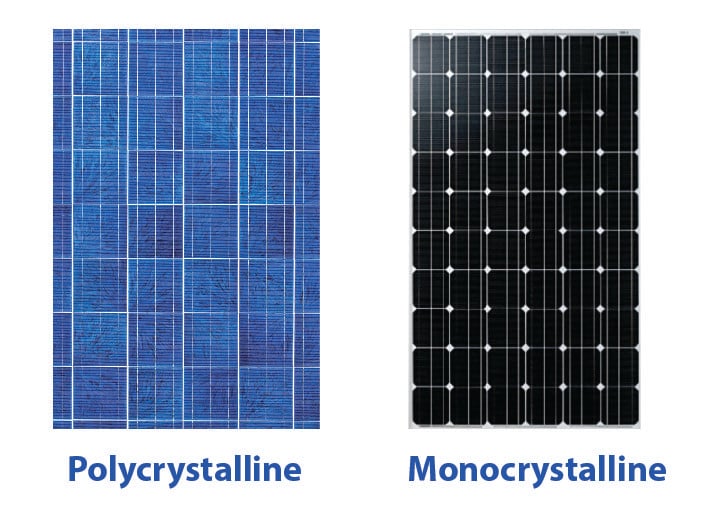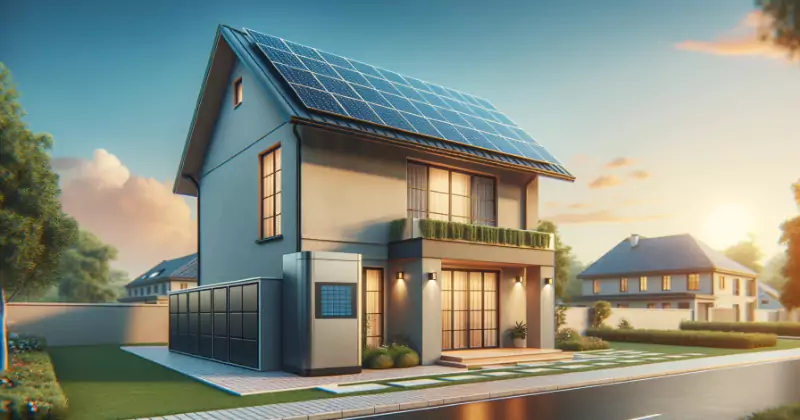Solar panels are a rapidly growing renewable energy source, providing homeowners and businesses a sustainable and cost-effective way to generate electricity. However, with so many different types of solar panels on the market, choosing the right one can take time and effort. Two of the most common types of solar panels are monocrystalline and polycrystalline panels. While both types are highly efficient and can generate significant amounts of electricity, they have distinct differences in cost and appearance and a slight but negligible difference in performance. This article will look at these two types of solar panels and help you decide which is best suited for your needs.
What are Monocrystalline Solar Panels?
Monocrystalline solar panels are photovoltaic (PV) solar panels made from a single silicon crystal. The silicon is purified and melted, and a seed crystal is inserted into the molten silicon. The seed crystal is then slowly pulled out of the silicon, allowing a single crystal to form.
These solar panels are also known as single-crystalline solar panels because they are made from a single silicon crystal. They are often considered the most efficient type of solar panel, as they can convert more sunlight into electricity than other solar panels.
Monocrystalline solar panels are typically made using a cylindrical ingot of silicon, which is sliced into thin wafers. The wafers are then processed and assembled into solar cells, which are then connected to form a solar panel.
One of the benefits of monocrystalline solar panels is their efficiency, which is due to the uniformity of the silicon crystal structure. They are also known for their sleek appearance, uniform black colour and rounded edges. However, they are typically more expensive to produce than other types of solar panels, such as polycrystalline solar panels.
What are Polycrystalline Solar Panels?
Polycrystalline solar panels, also known as multicrystalline solar panels, are photovoltaic (PV) modules comprising multiple silicon crystals. These crystals are melted together to form a solid block and sliced into wafers used to manufacture solar cells.
The production process of polycrystalline solar panels is less complex than that of monocrystalline solar panels made from a single crystal of silicon. Polycrystalline solar panels are also less expensive to produce than monocrystalline panels.
Polycrystalline solar panels typically have a blue tint due to how the silicon crystals are formed. They have a slightly lower efficiency rating than monocrystalline panels. However, technological advances have narrowed the efficiency gap between the two types of panels. Polycrystalline panels are popular for residential and commercial solar installations due to their affordability and reliability.
Performance: Monocrystalline Vs Polycrystalline
Regarding performance, monocrystalline solar panels are slightly more efficient than polycrystalline solar panels. This means they can produce more electricity for the same amount of sunlight. However, the difference in efficiency is typically small, and both panels can provide sufficient electricity for most household or commercial applications.
Performance comparison between two 2019 Trina solar panel models:
| Specification | Poly Panel: Trina Allmax P 275 | Mono Panel: Trina Allmax M 275 |
|---|---|---|
| Efficiency | 16.8% | 16.8% |
| Temperature Coefficient | -0.32 %/°C | -0.29%/°C |
| Performance Ratio | 89.9% | 89.9% |
Table data source: SolarQuotes
Appearance
Monocrystalline solar panels have a uniform, black appearance with rounded edges, while polycrystalline panels have a textured appearance with visible grain lines and a blue hue.

In conclusion, when choosing between monocrystalline and polycrystalline solar panels, several factors must be considered. While monocrystalline panels are typically more efficient and have a sleek black appearance, they are also more expensive. On the other hand, polycrystalline panels are more affordable. They have a visible blue tint due to how the silicon crystals are formed. Technology advancements have narrowed the efficiency gap between the two types of panels, and both can provide sufficient electricity for most applications. Ultimately, the choice between the two comes down to personal preference, budget, and the specific needs of the installation. Regardless of which type of solar panel is chosen, both offer a sustainable and cost-effective way to generate electricity.



